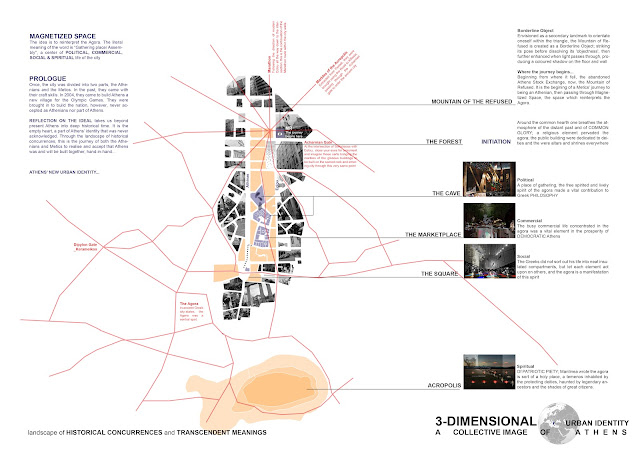GEOGRAPHICALLY
The city
of Athens sprawls across the central plain of the Attica Basin.
It is
bounded by four large mountains; Mount Aegaleo, Mount Parnitha, Mount Penteli
and Mount Hymettus.
The city
of Athens is “A City of Cities”.
8000 YEARS AGO
Ancient
Athens is divided into two parts.
One part
is “The City”, the other is “The Port City of Pireous”.
“The City”
is a walled city consisting two distinct parts; The Upper City and The Lower
City.
“The Port
City of Pireous” is the other walled city consisting a port near the sea.
The two
parts of Ancient Athens were connected by the Long Walls.
In “The
City”, The Upper City is represented by the Acropolis, The Lower City is represented
by the Agora.
The
Acropolis is the greatest architectural artistic complex bequeathed by Greek
Antiquity to the world, an urbanism of pure forms disposed according to the
sun.
The Agora is
the living heart, the constant resort of all Athenians.
It did not
spring to life on special occasions but was the daily scene of social life,
business and politics; the civic centre, market and administration of justice.
In
practical and political importance, the Agora constantly gained at the expense
of the Acropolis.
Until the
end, the Agora became the most vital and distinctive element of “The City”
Together,
the Acropolis and the Agora formed a sort of double nucleus.
PRESENT
The city
of Athens is divided into two parts.
One part
is Ancient Athens, the other is Modern Athens.
Ancient
Athens is represented by the Acropolis, the universal symbol of classical
spirit and civilization.
The
Acropolis is a survival, remembered as a symbol that gave Athenian life its peculiar
richness; retention and transformation of archaic survivals.
Modern
Athens is a triangle defined by Omonia, Kerameikos, Syntagma.
Omonia,
the gateway to Athens for immigrant, is the apex of the triangle.
Kerameikos
is an ancient cemetery and pottery quarter.
Syntagma
was the ancient Boubounista Gate, then the Palace of the Bavarian king, and
now, home to the Greek Parliament.
From the
city’s apex, three radial boulevards; Pireous, Stadiau, and Athinas each meet
Ermou at its base.
Stadiau
and Pireous are the city’s oldest thoroughfares dating back to the construction
of Themistoclean wall.
Athinas
is the main axis towards the Acropolis, the dividing line between two halves of
the triangle.
Ermou
crosses the centre of the city, the dividing line between Ancient and Modern
Athens.
Monastraki
is where Athinas meets Ermou, an open space with the most stunning view towards
the Acropolis and the most picturesque square with the Acropolis as its backdrop.
The
Acropolis appears majestically monumental on a high rocky outcrop above the
city of Athens
The Agora
disappears in scattered ruin, buried under the palimpsest of plans, reminiscence
of past memories
Modern
Athens is represented by a triangle depicting the continuity between Ancient
and Modern Athens.
However, contrary
to its intention, the Acropolis and the triangle appears as isolated objects
with no connections
One
enters and exits the triangle in confusion, guided only by glimpses of the
Acropolis along the main boulevards and squares
It is
everywhere and nowhere, the triangle dissolves in the seamless concrete canvas
of six to twelve storeys high
The
Acropolis has the city of Athens all at its foothills, this time, without a
living heart.






























